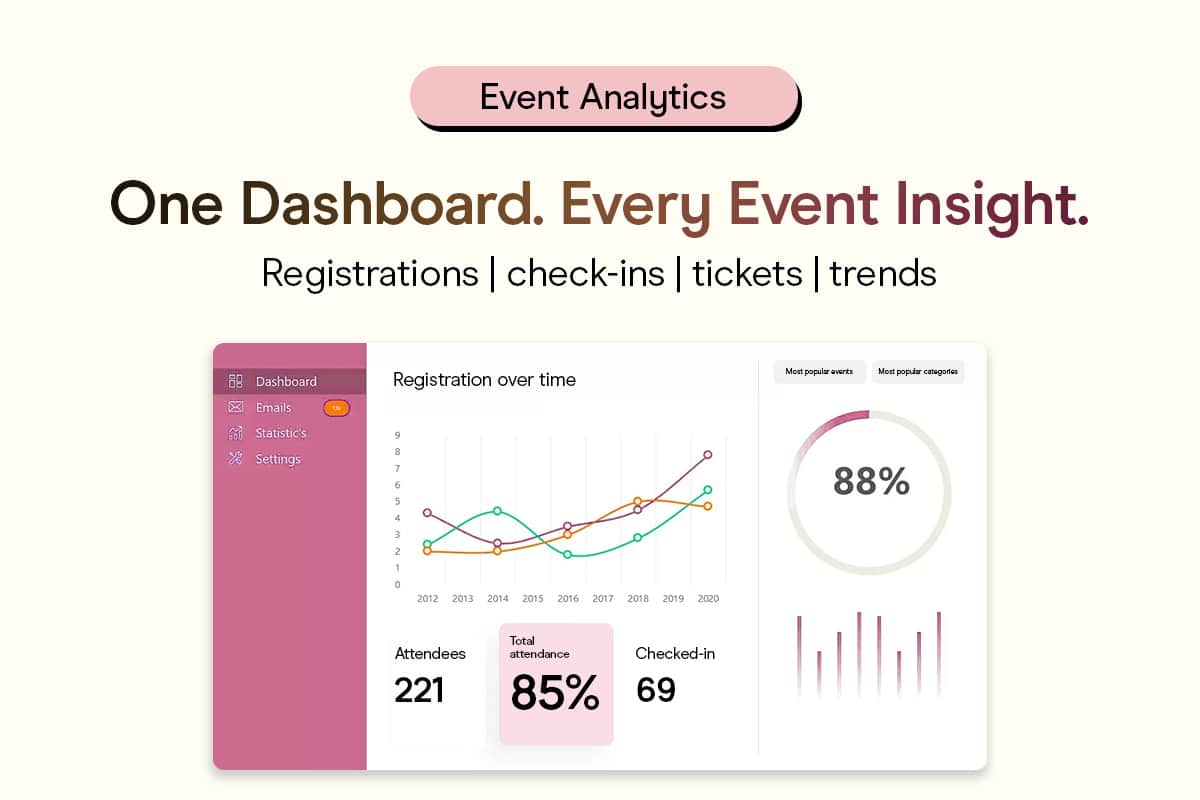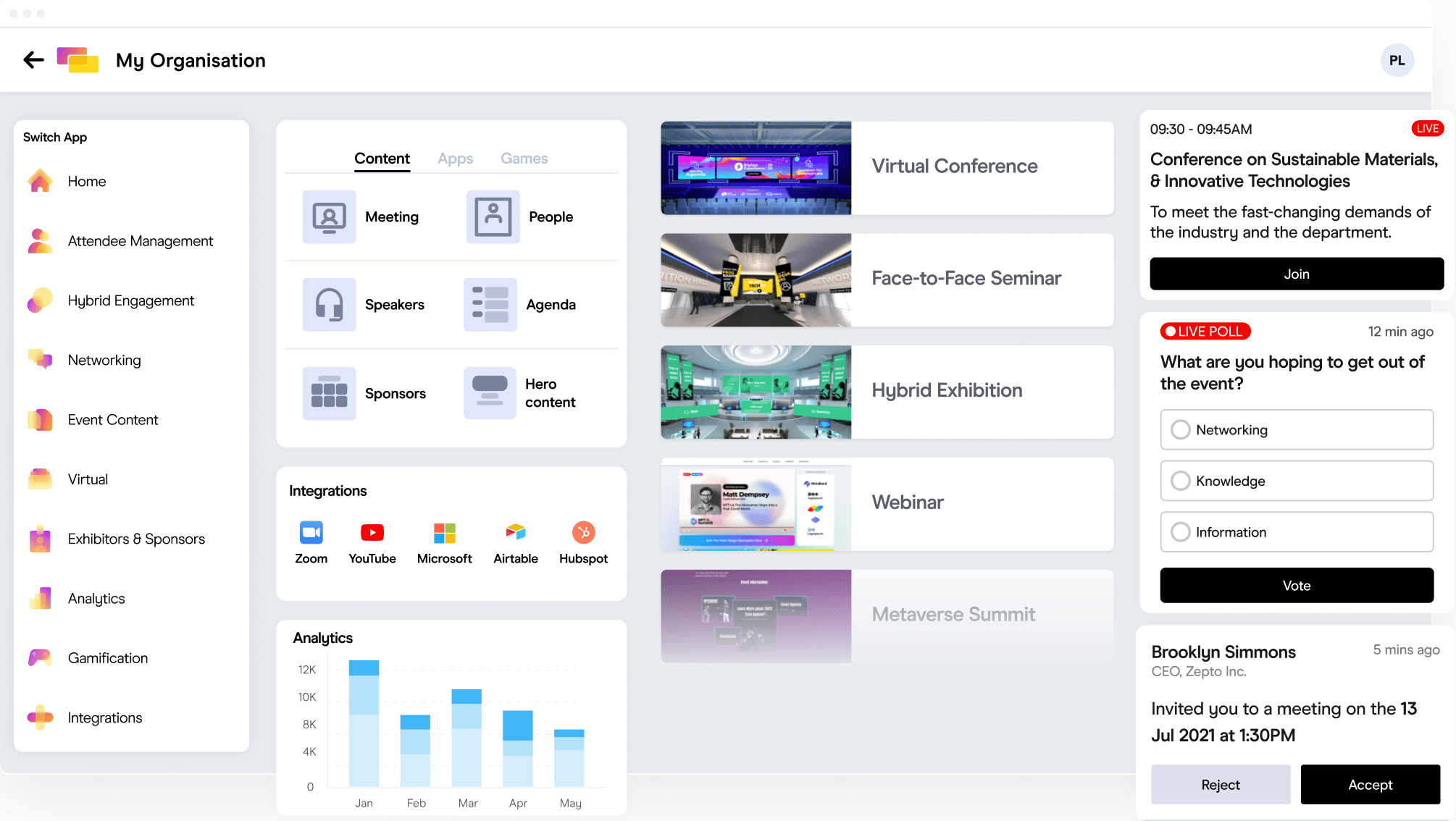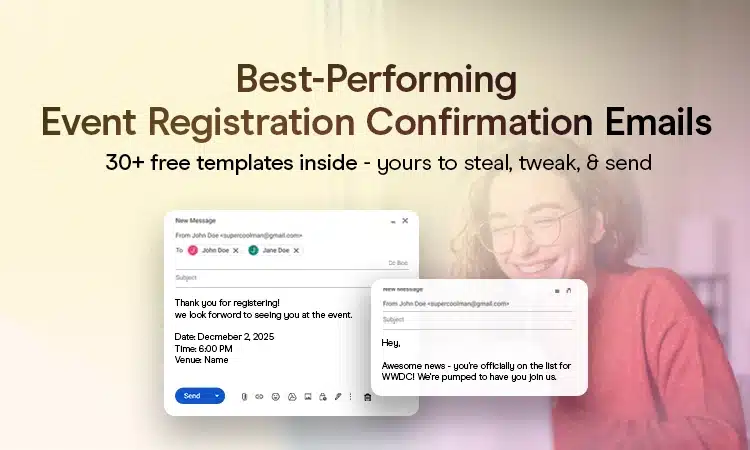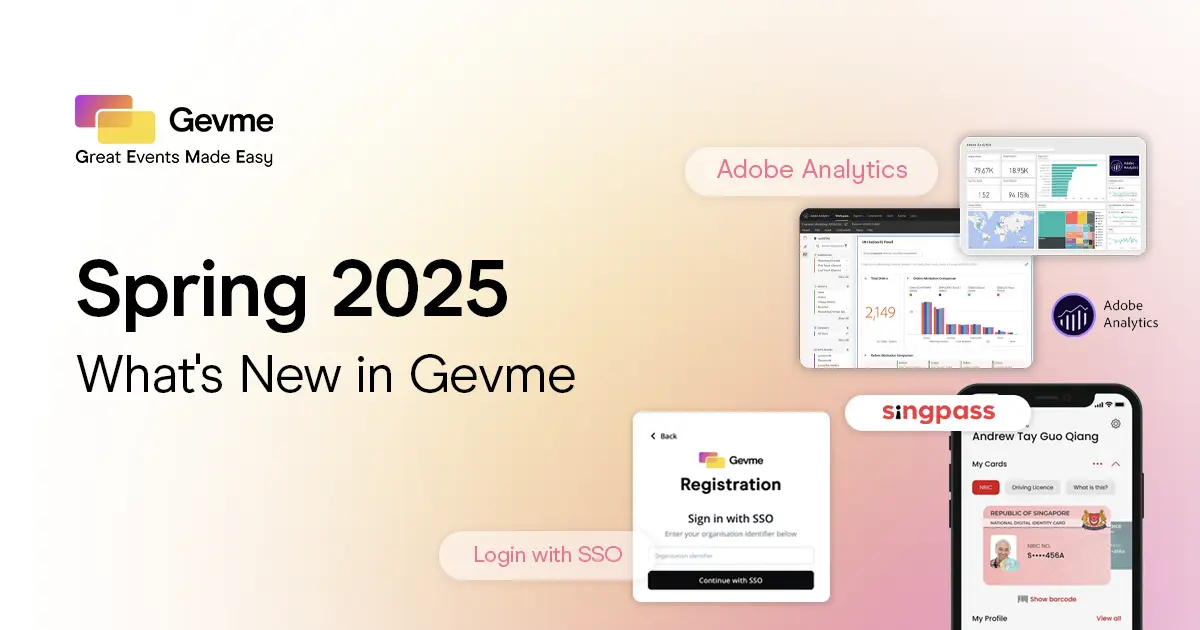You know that feeling when you’re staring at a pile of event data – registration stats here, session attendance there, networking numbers somewhere else – but none of it quite clicks? Like you have all these puzzle pieces scattered on the table but no picture to guide you.
That’s the challenge with siloed event data. You get numbers, but no story. And without the story, you’re basically flying blind.
Why Data Alone Isn’t Enough
Numbers are facts. But facts on their own rarely mean much if they don’t connect.
If your check-in data never talks to your session feedback, and your networking stats don’t link to who actually showed up on day one, you’re missing the bigger picture. You don’t just want to know how many people showed up or clicked a link. You want to know who did what, when, and why.
Imagine trying to improve next year’s event without knowing where people dropped off or which sessions actually held their attention. Or assuming your networking platform was a hit simply because many logged in – without any insight into whether meaningful connections were made.
Those gaps don’t just limit insight – they can cost you money, time, and credibility.
Why Siloed Data Falls Short
Most event tech stacks weren’t built to talk to each other.
You might have one tool handling registrations, another managing check-ins, a third for virtual sessions, and separate platforms for networking and surveys. Each spits out its own data, but these fragments don’t add up to much.
For example: 200 attendees at a session tells you something. But it doesn’t tell you who attended, how long they stayed, what else they did that day, or whether the session was relevant to them.
That missing context is where event intelligence lives. Without it, you’re left guessing.
[https://www.reddit.com/r/analytics/comments/1biy2y6/advice_for_building_out_event_tracking_and/]
“Our tracking is all over the place and there’s a lot of big missing pieces… I’ve been struggling with where to start.”
– A Redditor trying to build event analytics for a SaaS startup
Even seasoned data pros hit this wall. They have technical skills and know how to query datasets – but designing a tracking framework from scratch, deciding what to track, how to name events, or how to create meaningful dashboards, can be a maze.
It’s not just a tooling issue. It’s a thinking issue. When no one owns the full picture, you can’t tell a clear story.
Mapping the Moments That Matter
So where do you start?
Not with pageviews. Not with vanity metrics.
Start by mapping the key moments in your attendee journey:
- When someone registers
- Which sessions they attend, and for how long
- Whether they engage with your platform or app
- Who they connect with and how
- The questions they ask or feedback they leave
- When and why they drop off
If you track these consistently and in context, you’ll be ahead of most teams. It’s not about tracking everything. It’s about capturing enough to tell a coherent story.
That way, your data shifts from disconnected numbers into a meaningful narrative that explains not just what happened, but why.
The Power of Real-Time Insight
Having a connected view of event data lets you spot issues early.
For example, you might see engagement drop halfway through a session or discover that networking tools aren’t delivering the connections you expected. And you catch this while the event is happening, not weeks later in a bulky post-event report.
That means you can adjust on the fly, improving experiences as they unfold – not just reflecting on them when it’s too late.
When the event wraps, you’re left not with a mountain of disjointed stats, but with a clear, sharable story that shows what worked, what didn’t, and where there’s room to grow.
The Need for a Full-Stack Event Analytics Platform
This kind of clarity is rare – because it requires a platform built to unify all event data under one roof.
That’s where solutions like Gevme come in.
Unlike patchwork stacks that force you to stitch together exports and reports, Gevme is designed from the ground up to connect every attendee touchpoint: registrations, check-ins, session attendance, networking, virtual participation, and app engagement.
All your data flows naturally into one place, speaking the same language.
You don’t have to worry about naming conventions or juggling multiple dashboards. Instead, you get real-time insights that let you follow every attendee’s journey from start to finish – without the guesswork.
Whether you’re running a small workshop or a massive hybrid summit, having a single source of truth helps you understand the full story.
In the video below, you see what this looks like in action across multiple events. You can track exactly how many people registered, checked in, or completed payments, all broken down by event. No stitching reports together or second-guessing the numbers.
You also see how it surfaces the most popular events and ticket types automatically, and shows real-time registration trends across months. So if you’re trying to understand whether attendance is rising, what categories are drawing the crowd, or which campaigns are converting, it’s all right there, ready to act on.
And it doesn’t stop at totals. The data is sliced by attendee status, ticket performance, and event type, helping you spot gaps or opportunities in your planning, without needing a separate analytics team to dig it up.
cursorful-video-1747682559778.mp4
This matters because the stakes are higher than ever. You’re not just reporting on past performance. You’re trying to improve it in real time. And when decisions rely on partial, delayed, or conflicting data, it’s not just inconvenient, it’s risky.
A full-stack platform gives you more than just reports. It gives you confidence. Confidence that your data is accurate. Confidence that your team is aligned. And confidence that you’re not just running events, you’re running them with clarity and purpose.
Clarity Isn’t a Luxury Anymore
Events are changing. Attendee expectations are evolving. And the definition of success is shifting from turnout to relevance.
To meet that shift, event teams need more than data – they need clarity. A way to make sense of the moving parts while they’re still in motion. To test, respond, and adapt on the fly.
Platforms like Gevme aren’t just solving a tech problem. They’re solving a visibility problem. One that’s been holding event teams back for years.
And when that gap finally closes, everything – from planning to post-event reporting – becomes less about guesswork and more about momentum.
Disjointed dashboards. Confusing reports.
Get one clear view with Gevme







